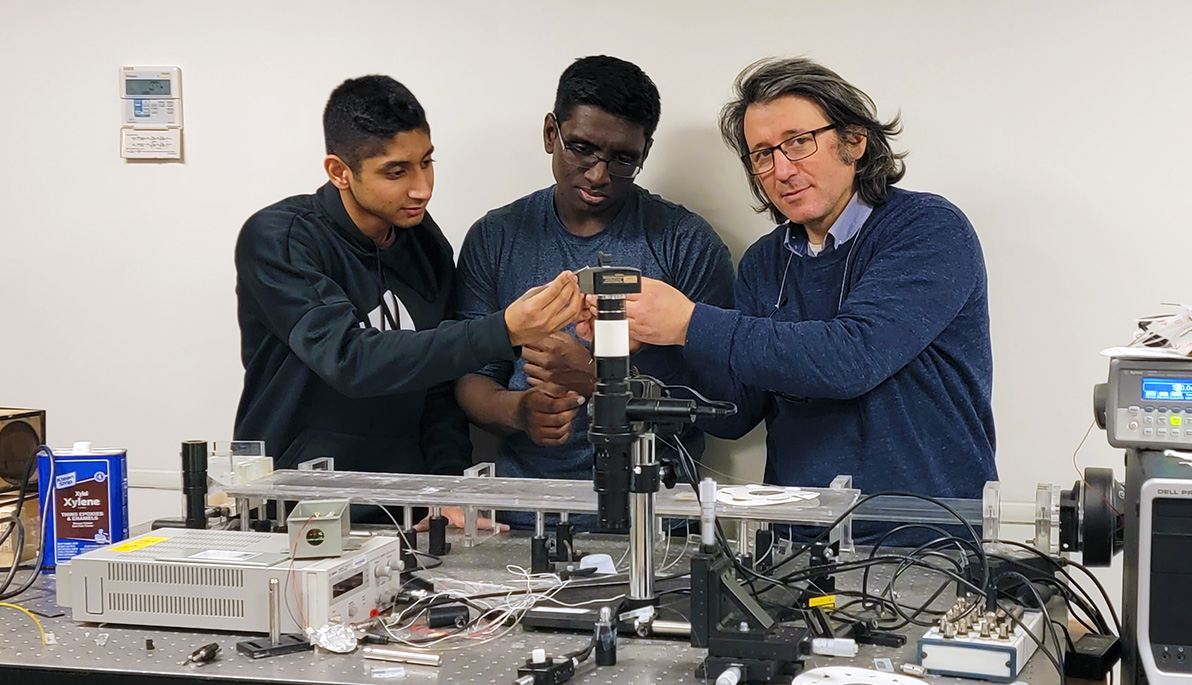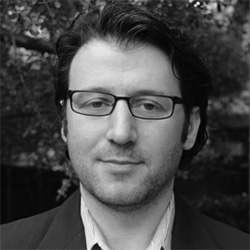
Faculty Profile: Tindaro Ioppolo

Title: Associate Professor
Department: Mechanical Engineering
Joined New York Tech: 2019
Campus: Long Island
The Power of Mechanical Engineering
Associate Professor of Mechanical Engineering Tindaro Ioppolo, Ph.D., has been in the United States since 2002. After earning a laurea degree—comparable to a master’s—in his native Italy, he got his Ph.D. in mechanical engineering from the Polytechnic University of New York in 2008. A holder of four patents, he has been at New York Tech since 2019. He sat down with The Box to talk about his field, his research, and his work with high school and university students.
What do you find interesting about mechanical engineering, and how does it relate to aerospace engineering?
My passion for mechanical engineering grows out of my love of physics and a desire to understand its application in real-world problems, particularly in new and innovative ways. For example, recently I worked with collaborators from Purdue University to develop a new technology that can detect viruses like COVID-19 in the air.
The fields of mechanical and aerospace engineering have a lot of overlaps. They build using the same fundamentals of mathematics and physics. However, aerospace engineering is more directly concerned with the design and development of high-speed vehicles.
What is the value of a mechanical engineering degree?
A mechanical engineering degree gives you the chance to understand and work in a variety of fields, whether aerospace, chemical, electrical, or biomedical projects.
For example, you could design the mechanical components of a high-speed vehicle, of an electrical or biomedical device, or of a chemical plant.
Which organizations sponsor your research, and who gets to work on these projects?
My research has been funded by the National Science Foundation, the Army Research Office, the Northeast Gas Association, and the Lockheed Martin Corporation.
In one of these sponsored projects, a team of graduate, undergraduate, and high school students and I are developing a sensor that helps to increase the maneuverability and stability of a helicopter.
In another project, my team and I are designing and building a hypervelocity wind tunnel for studying high speed and high-temperature gases as well as shockwaves for aerospace and energy applications.
How do you help students outside the classroom?
As an advisor, I guide my students through successive phases of improvement. Each phase advances their maturity as a researcher as well as their technical knowledge and ability.
I would like my graduate students to have a strong publication record and the ability to pursue their own research by the time they finish their master’s degrees. Undergraduate research advising is a crucial component of my teaching. Several undergraduate students have worked in my lab as part of their capstone project design.
In addition to my students at New York Tech, I am devoted to K-12 education. In the summers, my university students and I engage high school students in funded research projects.
During the last two summers, four high school students and four undergraduate students participated in a project funded by the Army Research Office. They learned about advanced laser-based diagnostics for fluid dynamics applications and helped build a low-speed wind tunnel. We will use the wind tunnel to understand the aerodynamics of helicopter rotors.
What aspect of your job do you most enjoy?
I love interacting with students. It’s why I chose to work in academia. I am always trying to transmit my passion and love for science to help them become the next generation of scientists.
What do you like to do when you’re not in the classroom?
I like to restore antique motorcycles and furniture. I also built and fly radio control model airplanes.
This interview has been edited and condensed.









